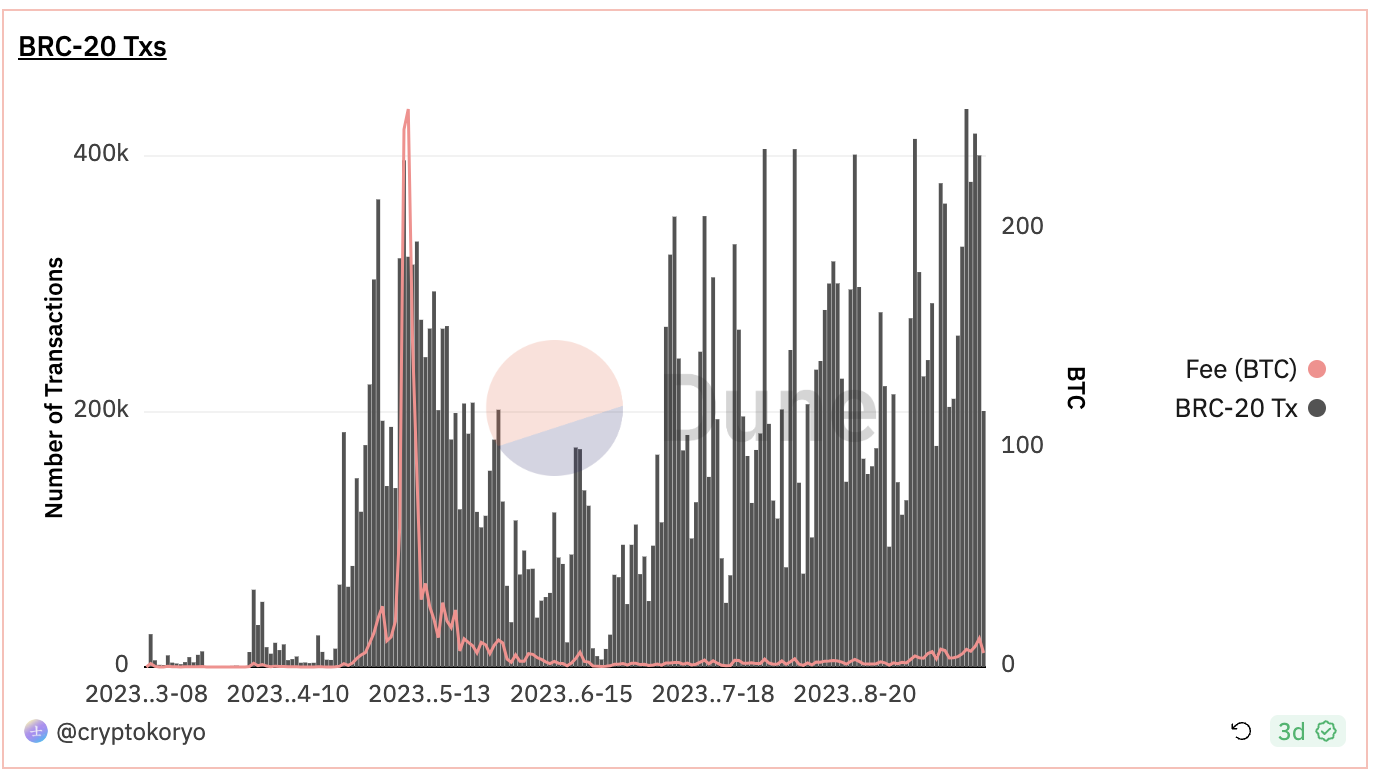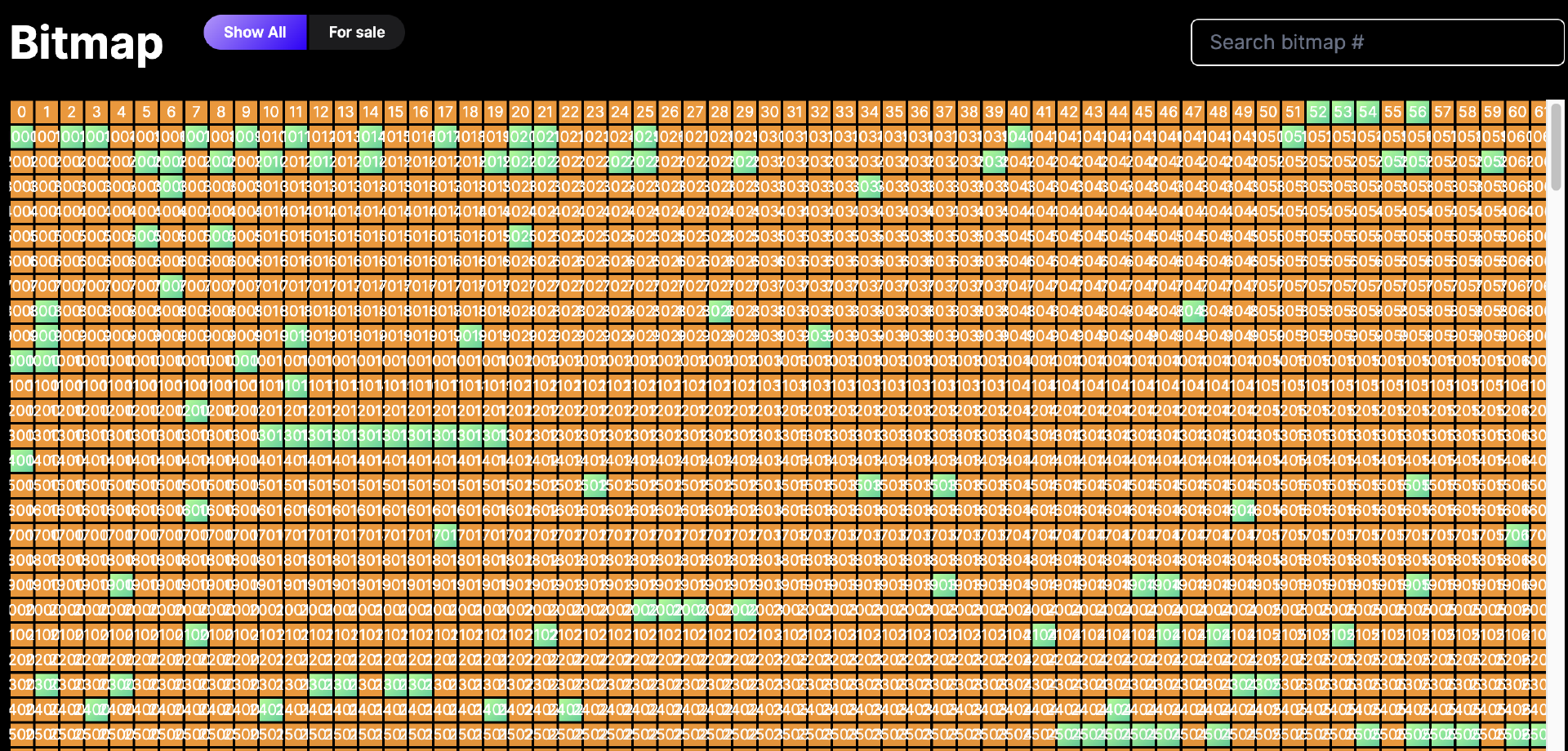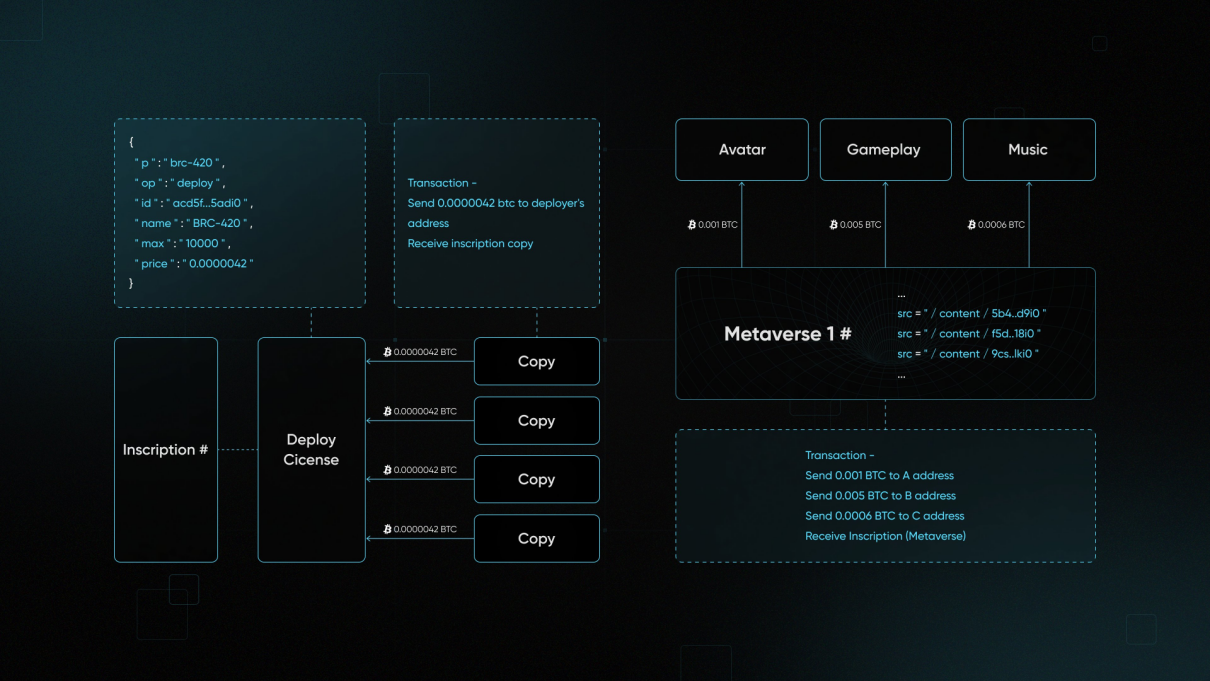This article will explain in detail the current development status of various new protocols in the Ordinals ecosystem, as well as better ways to participate.
Author: Wu Hai, PANews
Looking back over the past six months, the Bitcoin Ordinals ecosystem has gone from its inception at the beginning of the year to vigorous development from March to May, followed by a calming of emotions. Market sentiment has shifted from the previous prediction that Ordinals would become the engine of a new bull market to current skepticism and confusion.
However, a real fact is that the development of the Ordinals ecosystem has never stopped. Many new protocols and projects based on Ordinals have emerged during this time. For example, the newly launched brc420 and arc20 in the past two days have attracted widespread attention and discussion in the Ordinals ecosystem with opening prices more than 10 times higher than the cost price.
In this article, PANews will explain in detail the current development status of various new protocols in the Ordinals ecosystem, as well as better ways to participate.
Brc20: Deploying token contracts on the Bitcoin chain, remains active
On March 8, 2023, domo proposed the use of JSON data format for Ordinals inscriptions to deploy token contracts, mint, and transfer. The Brc20 protocol was born. Its first token, ORDI, achieved a rise of over a thousand times relative to the cost price, propelling Ordinals into the spotlight.
According to Dune data, as of September 23, the Brc20 protocol has generated 28.6 million transactions, resulting in fees of 1590 bitcoins, totaling 42.4 million US dollars. Observing it using ORDI as an index, its peak daily transaction volume exceeded 100 million US dollars, and the current daily transaction volume has dropped to a minimum of 8 million US dollars.
Since its inception, the Brc20 protocol has been closely followed by the community, but there have been almost no technical updates. The only significant progress so far is the development of brc20-swap by unisat, which combines wallet, inscription, and trading market in one, aiming to improve the current lack of liquidity of brc20 tokens.

Orc20: Making Brc20 more flexible, no updates
Orc20 was created by OrcDAO with the aim of enhancing some key features of BRC20, improving adaptability, scalability, and security, and eliminating the possibility of double spending.
Its official documentation mentions updates to OIP 1-11 to improve the Orc20 protocol, but since late July, the OrcDAO official Twitter account has stopped updating, and there have been no further developments. According to Dune data, from its inception to silence, the Orc20 protocol has generated 370,000 transactions, consuming fees worth 24 bitcoins.
Bitmap: Bitcoin chain metaverse, with over 20,000 addresses
The developer of the Bitmap protocol is blockamoto. The protocol aims to use Ordinals and Bitmap theory to build a metaverse based on the Bitcoin chain, allowing anyone to inscribe spatial assets of Bitcoin blocks, with a decentralized and fair distribution process.
After the protocol was launched, Ordinalswallet officially developed a map based on Bitmap for checking and inscribing. Subsequently, developers built bitmap.land as a portal for the Bitmap protocol, along with tools like bitmap-directory. In addition, there have been continuous projects based on the Bitmap protocol.
As of now, the incomplete statistics of the transaction volume on the Bitmap map have reached 120 bitcoins, with over 22,000 holding addresses. The community discussions are more rational, mainly focusing on how to expand and enrich the Bitmap protocol.

gBRC721: Optimizing block space, lack of follow-up
The gBRC721 protocol, also known as generative-brc-721, was developed by 0xJerry543, who is also the creator of the Bitcoin NFT project DogePunks. The protocol aims to save on-chain resources, achieving 50%-90% optimization of block space to accommodate more creators and promote innovation.
The protocol gained attention due to its ecological project OrdiBots, which achieved a thousandfold increase in relative cost. The total transaction volume of its representative project, OrdiBots, is 37 bitcoins, with 550 holding addresses, and has not been resolved or displayed on the Magiceden front end. Initially, the community's enthusiasm was extremely high, but due to the lack of follow-up, the protocol has not seen further applications, and the community has fallen silent.
Recursive inscription: Making the metaverse run on Bitcoin, currently bleak
Recursive inscription was proposed by Casey Rodarmor, the creator of Ordinals. The intention is to allow inscriptions to exceed the 4MB limit of Bitcoin block size, enabling complex 3D video games to be fully inscribed on Bitcoin. This led the community to believe that similar to ERC20 smart contracts, perhaps smart contracts could run on the Bitcoin chain, making scalability and interoperability on the Bitcoin chain possible.
Although market attention and sentiment were high, few developers have used recursive inscriptions to build projects, and those that have appeared are mostly improvements on existing projects.
In terms of transaction volume and increase, the representative Recursive Punks and Recursive Frogs have a combined transaction volume of only 30 bitcoins. Currently, the community hardly mentions recursive inscriptions, and there are no ongoing projects.
Trac: Decentralized indexing for Ordinals, a rising star
The developer of the Trac protocol is Beny, aiming to solve the unresolved issue in the inscription ecosystem—decentralized indexing. Due to its innovative concept and alignment with community pain points, its governance token TRAC has performed extremely well in the secondary market, achieving a relative cost increase of over a hundredfold, with a total transaction volume of 2.1 million US dollars to date. Trac has already collaborated with projects such as Bitmaps and Inscribed Handles.
Subsequently, Beny developed the Tap protocol, an OrdFi-enabling protocol for Ordinals services. The protocol's tokens have different functions, including transfer confirmation mechanisms, batch transfers, and the ability to set token names from 3 to 32 characters, allowing developers to create their own tokens more flexibly. The representative token of this protocol, -TAP, also has a decent over-the-counter price.
Last week, the Tap protocol introduced a new feature, "token-auth," which provides support for third-party authorization to send tokens from authorized wallets. This supports games, metaverses, token bridges, and cross-chain markets on the TAP protocol.
ORC-CASH: A token system like a cash system
The creator of the ORC-CASH protocol is Sonic, with the intention of implementing a token system on the UTXO network similar to a cash system. The first token of the protocol, OSH, rose to a high of 100 US dollars after inscription. Excluding the initial over-the-counter trading volume, the trading volume on the Magiceden platform is 10 bitcoins.
Upon observation, the ORC-CASH protocol has been actively developed and operated by the developers since its inception, proceeding in an orderly manner from indexing to market listing. The community also has reasonable stickiness, with discussions and exchanges mainly focused on development. Occasionally, there are on-chain proposals for the community to propose and vote on. Recently, its creator, Sonic, also attended the 2049 conference in Singapore to exchange ideas with developers in the Ordinals ecosystem.
Brc420: Endowing inscriptions with royalty functionality
The creator of Brc420 is Recursiverse, which emerged during the period of recursive inscriptions. Brc420 defines more complex asset formats in a recursive manner and is fully open source, allowing anyone to create their own metaverse inscriptions. At the same time, Brc420 establishes a constraint relationship between usage rights and royalties based on individual inscriptions. When a user owns an inscription, they can allocate usage rights and set a price for it, which can incentivize more innovation in the Ordinals ecosystem.
The first experimental token of the Brc420 protocol has also been launched, and there is still decent over-the-counter enthusiasm. Its creator, Recursiverse, continues to expand its ecosystem and collaborate with many protocols and projects within the Ordinals ecosystem. According to official information, they also sponsored the recent OrdinalsSummit conference in Singapore.

Arc20: The simplest and most powerful way to create digital objects on Bitcoin
The Arc20 protocol solves the problem of representing any fungible token asset on the Bitcoin blockchain. The ARC20 fungible token standard ultimately brought colored coins to Bitcoin, using 1 satoshi to represent ownership units of deployed tokens. In other words, the value of each token will never be less than 1 satoshi.
The project's Twitter account has been operational since the end of May 2023, but it was only discovered by the community in the past two days and token minting has begun. Due to the minting method of Arc20 protocol tokens being through GPU mining, it requires a certain level of technical expertise. Despite this, the community managed to complete the minting of the first token, ATOM, in just one day.
After the minting of ATOM, over-the-counter trading has been abundant. The price opened at $30 per token, briefly paused at $50, then jumped to $100, and has now fallen back to around $80. Its widespread attention and fomo sentiment have revitalized the previously quiet Ordinals ecosystem, with users mentioning the Arc20 protocol on social media and various communities. Whether it can continue to operate sustainably, or like many previous protocols, experience a surge in popularity followed by silence, remains to be seen.
Summary
According to the data analysis platform geniidata, as of September 23, there have been over 33.9 million inscriptions generated, with over 600,000 holding addresses, resulting in nearly 45 million transfers and transactions. According to Dune data, the fees generated by the Ordinals ecosystem have exceeded 2,000 bitcoins, equivalent to a value of 53 million US dollars.
As can be seen from the above, since its inception, the Ordinals ecosystem has experienced a peak of attention and funding across the entire network, gradually calming down afterwards. From an investment perspective, regardless of the outcome of each new protocol, they have all experienced a fomo phase after being listed on the secondary market. Therefore, one can look for projects with new protocols, zero or low-cost inscriptions, enter at a low cost, and then sell chips in batches during the fomo period in the secondary market.
In addition, new protocols and projects in the ecosystem continue to emerge, with developers constantly developing and improving, and users are also keen to pay attention to and invest in new protocols. In the long run, the Ordinals ecosystem is also worth paying attention to.
免责声明:本文章仅代表作者个人观点,不代表本平台的立场和观点。本文章仅供信息分享,不构成对任何人的任何投资建议。用户与作者之间的任何争议,与本平台无关。如网页中刊载的文章或图片涉及侵权,请提供相关的权利证明和身份证明发送邮件到support@aicoin.com,本平台相关工作人员将会进行核查。




